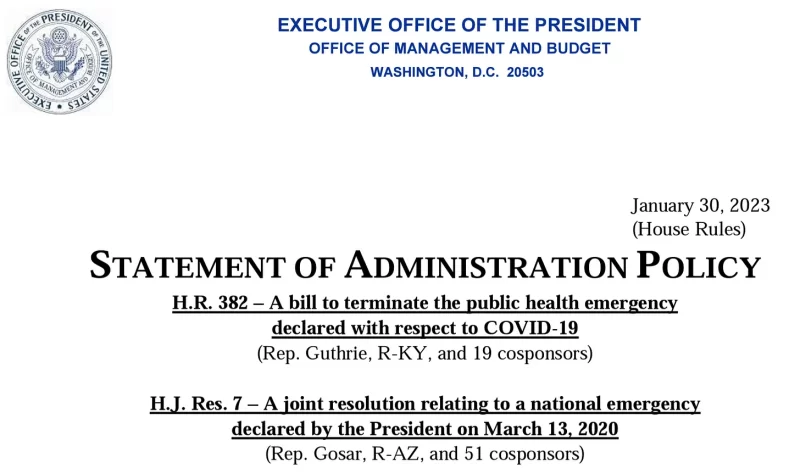Guest Post by Dr. Robert Malone

Finally, we may be seeing a winding down of US Federal Government responses to the COVIDcrisis. January 30, 2023 is a date destined to go down in history as the beginning of the end of the draconian US Federal Government’s “public health” measures, which have been implemented in a stepwise (ratcheting) manner beginning late January, 2020. What does this really mean, in a practical, real-world, kitchen-table sense of things?

Depending on when you define the point in time where SARS-CoV-2 entered the population of humans, the COVIDcrisis has extended for about three years- in contrast to the two year long “1918 Swine Flu” epidemic involving a different RNA respiratory virus attributed to causing over 50 million deaths worldwide. As of January 31, 2023, there have been 6,812,798 cumulative deaths from COVID-19 per the WHO.
In terms of raw cumulative mortality (not adjusted for changes in total global population) that would make the 1918 H1N1 outbreak (which probably had other infectious cofactors) about seven times more lethal than COVID-19. Adjusted for population (1917 global population about 1.8 billion, current global population about 7.8 billion) that would be a relative mortality of around 50M/1800M= 2.7 percent (1918 H1N1) compared to 6.8M/7,800M = 0.087 percent (2020-2023 COVID-19). In the case of the 1918 RNA respiratory virus outbreak, there were few if any significant medical countermeasures (such as antiviral drugs or vaccines) available, and quenching of the outbreak was primarily consequent to development of “natural immunity” within the global population. Continue reading “An Analysis of the End of the Emergency”



